The Bridge to Show Completion
The final piece of your trade show to-do’s is post show reporting. In our Expo Series we’ve discussed a number of important topics around show behavior, production and the pinnacle of show strategy. Finally, we want to talk about completing your post show report and why it’s just as crucial as developing your show strategy.
The point of a post show report is to help the involved teams and upper management understand the real value of attending a show, where improvement is needed and to hopefully, create some stretch goals for the next event. If the show is a huge success, it can start to paint the picture of how scaling up may be the next logical growth move for a companies brand. Likewise, if it shows little to no value, it’s a good indicator that a different approach is needed, or the show may not be a show worth pursing at all.
Responsible companies that look at the best ways to spend funds to further their brand need an unbiased, accurate picture or they are left to paint their own, which is never a good approach.
In this last article of our Expo Series, we will guide you on the fundamental elements you should always include in your report, what to measure, several approaches on measuring and how to ensure the report is meaningful to the right audiences.
First and foremost, a post show report should touch on all facets of the show outcome. For this, you need to ensure the people involved in the show are required to contribute to the post show report.
*The report should never be a singular logistics report or one persons observations with photos.
FUNDAMENTAL ELEMENTS TO INCLUDE IN YOUR POST SHOW REPORT
A good start is to create a template for your reports so they have consistency over time on the basic things that will help you evaluate the show over time as well as on a particular event.
The template should include:
- Show name
- Show location
- Show dates
- Total number of attendees (expected, actual)
- Attendee breakdown (by title, by industry)
- Booth size
- Size of team working the show
- Budget
- Actual cost
- Lead quantity
- Sales
- Objectives (if existent)
- If you don’t have your show objectives you should include the following if applicable:
- Key show messages
- Marketing activity prior, during and post (were you also in partner booths? did you showcase new products? did you market in show guides or host any events?)
- Show discounts and sales closed at event (for CPG shows)
- Sales meetings
- Press meetings
- Media interviews / topics
- Speaking engagements
- If you don’t have your show objectives you should include the following if applicable:
- ROI
WHAT TO MEASURE & WAYS TO MEASURE
Though some of the areas to measure are obvious because they are tangible, it takes a bit of thought and perhaps some education when trying to attach value to the intangible items. We will touch on both.
If you have set goals on both the tangible and intangible values prior to the show, it’s possible to also grade these objectives by percentage met and then give the show an overall success percentage. We like this method for those companies who set and measure their overall business objectives in this manner as it ties directly into the higher level metrics.
As we mentioned earlier, it’s important that all persons involved, are accountable to contribute to the post show report.
TANGIBLE OUTCOMES
- Budget vs. Spend
- This could be fine as just budget vs. spend, however, we recommend a deeper dive for future awareness, especially if the budget went over. It’s important to understand what areas caused challenges.
- Note: It’s critical that the CFO, finance and the marketing individual managing the show budget are completely aligned on what is included and that there is a sign off on any other individuals putting costs against a show. Whomever is responsible for the entire show budget should be the only one approving the items that will accrue to the program. We’ve seen some real shenanigans and terrible processes around this so be sure to get alignment from the get go.
- New Leads & Nurtured Leads
- We suggest setting lead goals to showcase goals vs. actual
- Going further; it’s great to also include qualified new leads vs. existing leads (nurtured leads already in your database or CRM system)
- Note: what makes a qualified lead is based on how sales and marketing have set up the lead ranking process.
- Sales
- If you’ve sold product at a show before, you will likely have an idea of how to set some sales goals. We recommend doing this so you can see the goals vs. actual sales. It’s great incentive for the sales teams as well.
- If you have not sold product at a show before, but are expecting to, you can use the first measurement as the bar for future shows.
- Note: this piece of the report should be an updated report segment based on a typical sales cycle. That means the tangible ROI will also be updated accordingly.
- Sales Meetings
- goal vs. scheduled vs. actual
- great to note any solid opportunities or outcomes from the meetings
- Press & Analyst Meetings
- scheduled vs. actual
- topics and message covered
- how it was received (looking for value added, not just good or bad)
- valuable input based on meetings
- follow-up requirements
- Media Interviews & Coverage
- scheduled vs. actual
- topics and message covered
- value input based on meetings
- follow-up requirements
- coverage & opportunities
- Speaking Engagements
- number of attendees
- feedback from attendees if relevant
- topics covered
- additional leads gained
- Pre & Post Show Marketing Metrics
- Depending on efforts you can typically place numbers to this on reach, meetings and even sales based on show deals or other program offerings. Some of these metrics may also overlap into the brand impressions report.
- Anything Else
- Any other tangible outcomes that were part of the show objectives
INTANGIBLE OUTCOMES
- Brand Impressions
- We look at show attendance in addition to the audience reached through show marketing, speaking engagements, media coverage and PR efforts. All those numbers are your impressions metrics. Brand awareness, including word of mouth counts for anywhere between 20 – 50% of purchasing decisions, based on a McKinsey report.
- Show Survey (to all teams that attended)
- A great way to survey intangible goals is to create a rating system from 1-5 (5 being amazing, 1 being not recommended or something to that effect)
- The survey should include:
- overall show success
- overall booth impression
- overall booth message
- effectiveness of sales tools provided
- quality of leads
- …
- Sales Made (where show acted as an influencing factor)
- This one takes some work but for those who are looking at how all marketing works in tandem with a longer sales cycle it’s a great thing to do.
- This is typically a sales and marketing multi touch measurement. we have seen sales and marketing go toe to toe on this so it’s important to set up the CRM system and processes in a way where you can start to see trends and bring the teams together on what is contributing most to the sales cycle.






